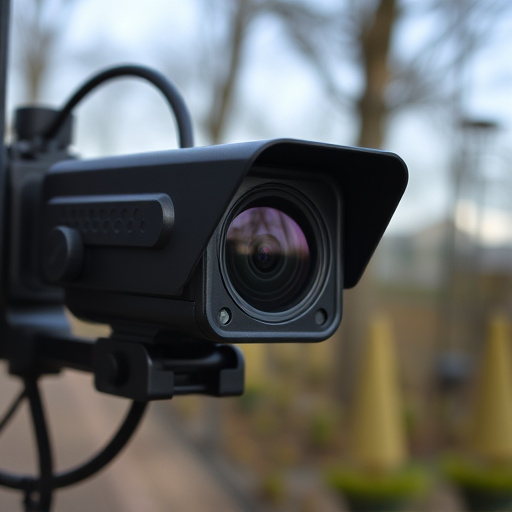Undetectable wireless security cameras, seamlessly integrated into everyday objects like plants or light fixtures, have revolutionized surveillance but raise significant privacy concerns due to their invisibility. Modern smartphones, equipped with advanced sensors and apps, can help detect these cameras through visual, thermal, and motion sensing. Individuals should remain vigilant, employ high-resolution phone cameras for scans, stay informed about camera tactics, and use dedicated detection apps to protect personal safety and privacy against undetectable wireless security cameras.
Undetectable wireless security cameras have evolved into sophisticated tools, but their clandestine nature poses significant risks. As technology advances, so do methods for their detection. This article explores how smartphones are now equipped with features that can identify hidden spy camera lenses, providing a crucial defense against covert surveillance. We’ll delve into the mechanics behind this technology and discuss proactive measures to prevent and mitigate the risks associated with undetectable wireless security cameras in our daily lives.
- Understanding Undetectable Wireless Security Cameras
- How Smartphones Can Detect Spy Camera Lenses
- Preventing and Mitigating the Risks of Hidden Cameras
Understanding Undetectable Wireless Security Cameras
Undetectable wireless security cameras have evolved into a subtle yet powerful tool in the realm of surveillance, often slipping beneath the radar due to their advanced design and stealthy operation. These cameras are designed to be virtually invisible, integrating seamlessly into everyday objects like plants, light fixtures, or even wall outlets, making them nearly impossible to spot without specialized knowledge. Their wireless capabilities further enhance their discreet nature, allowing for remote access and monitoring via smartphones or computers, adding another layer of invisibility to their operation.
While the concept may sound sinister, these cameras serve various legitimate purposes, from home security to professional surveillance. However, their undetectable nature also raises important privacy concerns, especially when deployed without consent. As technology advances, it’s crucial for users and regulators alike to stay informed about the capabilities and implications of such devices, ensuring a delicate balance between security measures and individual freedoms.
How Smartphones Can Detect Spy Camera Lenses
Modern smartphones are equipped with advanced sensors and cameras that can aid in detecting undetectable wireless security cameras. These devices use a combination of visual, thermal, and motion sensors to identify suspicious activities. Through specialized apps, users can analyze live feeds and still images to spot unusual patterns or signs of hidden lenses.
One effective method involves analyzing the light signature of the camera. Smartphones can detect sudden flashes or irregular light patterns that might indicate the activation of a spy camera lens. Additionally, thermal imaging technology can uncover heat signatures from cameras, making it easier to identify hidden devices. Users can also leverage community-driven apps that allow individuals to share information about suspected spy cameras in their areas, enhancing collective vigilance against such devices.
Preventing and Mitigating the Risks of Hidden Cameras
Hidden cameras, particularly undetectable wireless security cameras, pose significant risks to privacy and security. Their miniature size and advanced technology allow them to be seamlessly integrated into everyday objects like clocks, pens, or even light bulbs, making it incredibly challenging for the average person to detect their presence. This creates a concerning environment where personal spaces can be surveilled without consent.
To mitigate these risks, individuals need to stay vigilant and adopt proactive measures. Regularly inspecting home and office environments with high-resolution phone cameras can help identify suspicious devices. Staying informed about the latest tactics used by hidden camera manufacturers and being aware of common locations where such cameras are likely to be hidden are also crucial. Additionally, investing in reliable detection apps or tools designed specifically for identifying wireless security cameras can significantly enhance personal safety and privacy.
Undetectable wireless security cameras, though innovative, pose significant risks to privacy. As our reliance on smartphones grows, these devices can become powerful tools in detecting hidden lenses, offering a layer of protection against surveillance. By understanding the technology behind undetectable cameras and utilizing smartphone applications, individuals can proactively mitigate the dangers associated with these clandestine devices. Staying informed and armed with the right tools is essential in navigating this modern-day enigma, ensuring safety and privacy in our digital age.
